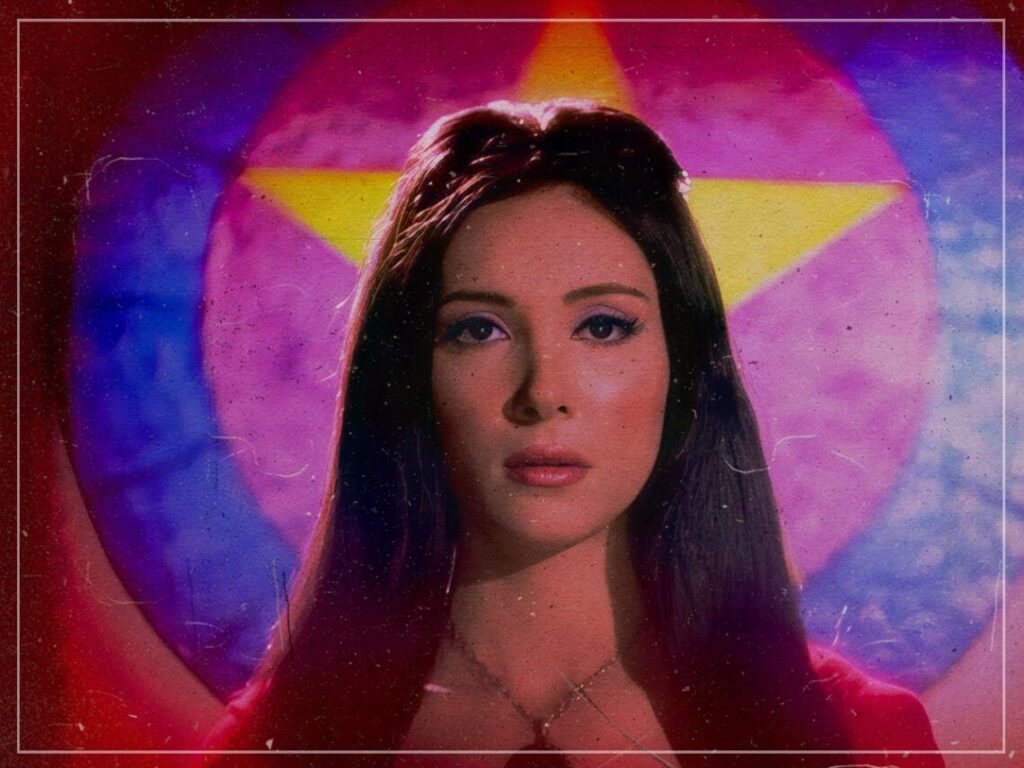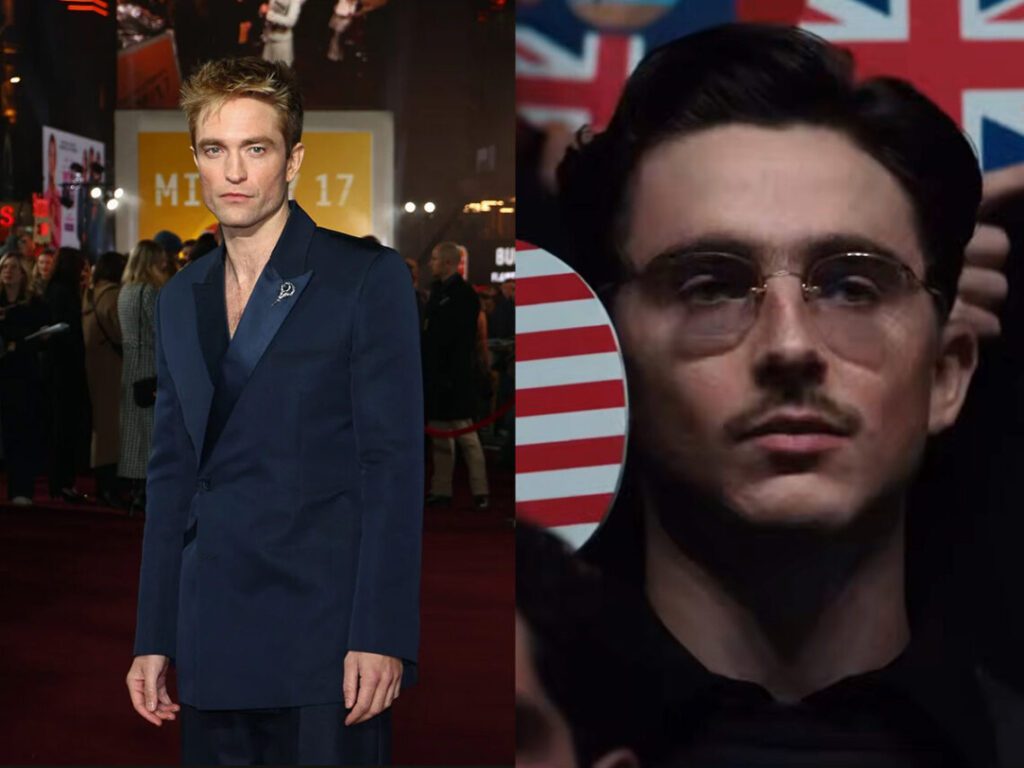‘The Love Witch’: style over substance?
 Posted On
Posted On
(Credits: Far Out / Oscilloscope Laboratories)
When a film places extreme emphasis on aesthetics, with every single set piece, costume, makeup look, and hairstyle closely considered, does that automatically mean that it contains less substance? For years, when women have directed films that place significant value on these things, paying close attention to the colour palette or overtly stylised shot compositions, for example, they’ve often faced criticism. Meanwhile, the men who do it—people like Wes Anderson and Quentin Tarantino come to mind—are lauded for the same decisions.
The Love Witch, directed by Anna Biller, is one of the most stylish movies of the past decade, with the filmmaker going above and beyond to craft a film that feels like it could’ve been made decades prior. Even certain actors in the film, like Jeffrey Vincent Parise, who plays Wayne, genuinely looks like a man from the ‘60s. Biller didn’t simply cast actors and dress them up in retro outfits – they all look as though they’ve been plucked from another time period. The attention to detail found within the film is striking – Biller even made the pentagram rug and created the intricate paintings that adorned the walls of Elaine’s apartment.
To find the perfect costumes and furniture, Biller spent years hunting for the right vintage pieces or she made them herself. Every detail of the film was highly composed and intentional, resulting in a stylish fantasy where every scene is bathed in beautiful Technicolour and given the look of an old Hollywood movie. The director’s blending of different time period’s aesthetics, such as ‘70s psychedelia, ‘60s mediaeval revival, and Edwardian femininity, creates endless visual delights – especially for vintage lovers.
The movie’s visuals pay homage to the glamorous movies that Hollywood used to make, although Biller uses a modern feminist lens to consider themes like love, sexuality and gender, with Samantha Robinson playing a woman who uses witchcraft to entice men. “She loved men… to death,” the film’s slogan reads, teasing a twisted tale of love and horror. Certainly, much of The Love Witch takes inspiration from old horror movies from the ‘60s that were often acted with schlocky, over-the-top dramatism. Thus, the cast deliberately performed in a stylised way that many modern audiences just aren’t used to, which certainly left many viewers confused.
Despite the fact that the movie has a very strong plotline revolving around Elaine’s obsession with love and her reliance on witchcraft, as well as the poignant themes it explores relating to gender roles and male fantasies, many critics were still quick to focus on and pick apart the movie’s ‘superficial’ elements. Certain audiences seem to view the movie’s preoccupation with elaborately decorated sets, stylistic close-up shots, gorgeous outfits, and purposefully camp acting as nothing more than a crutch to hide the film’s so-called lack of substance. Yet, there’s hardly a dull moment in the film, from the hilarious encounters between Elaine and Wayne to the bizarre mediaeval wedding inspired by Donkey Skin.
To criticise the film’s use of visuals as a language of its own misses the point of Biller’s idea. The Love Witch is laden with aesthetic touchpoints which serve the greater narrative. The paintings all allude to Elaine’s story, the colour palette of the apartment is based on a specific tarot deck, and the very fact that the movie pays such strong homage to the ‘60s – a time when the progression of women’s freedom scared many men – is no coincidence. By using witchcraft as a central theme, Biller communicates how so many people view women as attractive objects yet simultaneously find their sexuality and independence terrifying. To illuminate her point, she creates a visually stunning world designed to specifically cater to female audiences.
The use of elaborate style and aesthetics, something that is typically associated with women, gives the movie the feeling of being a feminine fantasy. While we see sexualised scenes, Robinson’s character is never objectified by the camera. Instead, she exists in a world of gorgeous images and magic, inviting female viewers to get lost in the film’s cinematic, stylistic dream. That’s not to say that all women will find the film enjoyable or that men will write it off as a movie that’s ‘not for them’; rather, Biller’s movie is a world defined by the female gaze, challenging modern Hollywood’s lack of interest in luxurious visuals that were once more common on our screens.
Sofia Coppola’s movies have often been criticised for similar reasons, especially Marie Antoinette, which many male reviewers lambasted upon its release for its use of ‘girlish’ images of pastel-coloured dresses, shoes, and cream puffs. Yet, like Biller’s films, her movies are designed with women in mind. These female filmmakers have helped to expand cinema’s depiction of the world, offering up a cinematic universe where female voices and interests are properly and unashamedly explored rather than deemed as ‘less-than’.
Sadly, it seems as though female filmmakers like Coppola and Biller are always going to face a level of backlash for their work, hearing echoes of “it’s all style over substance.” Yet, these qualities have made people like Wes Anderson icons, spawning internet trends, exhibitions, and books based on his style. It’s about time that people recognise that an emphasis on style doesn’t always equate to a lack of substance.
[embedded content]
Related Topics


